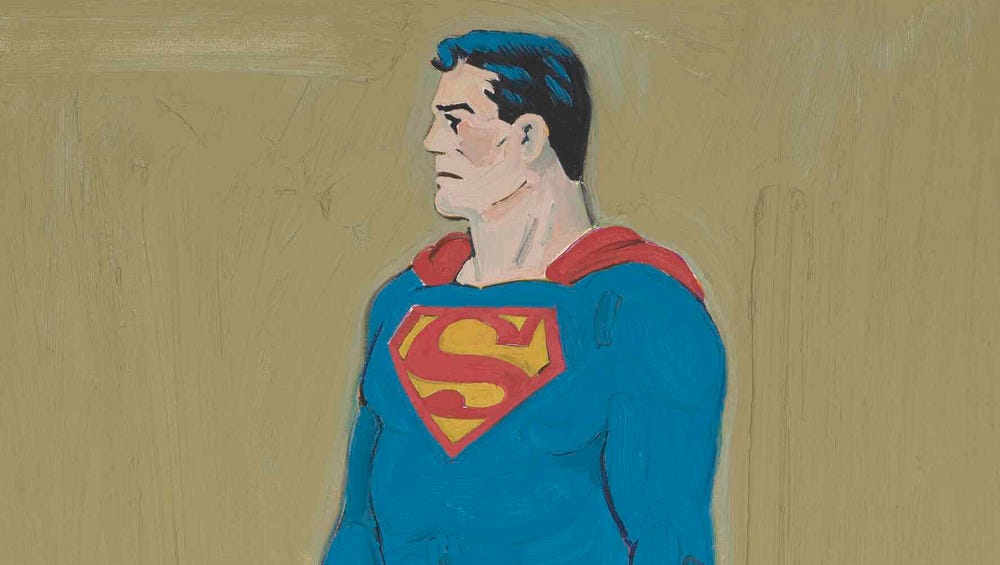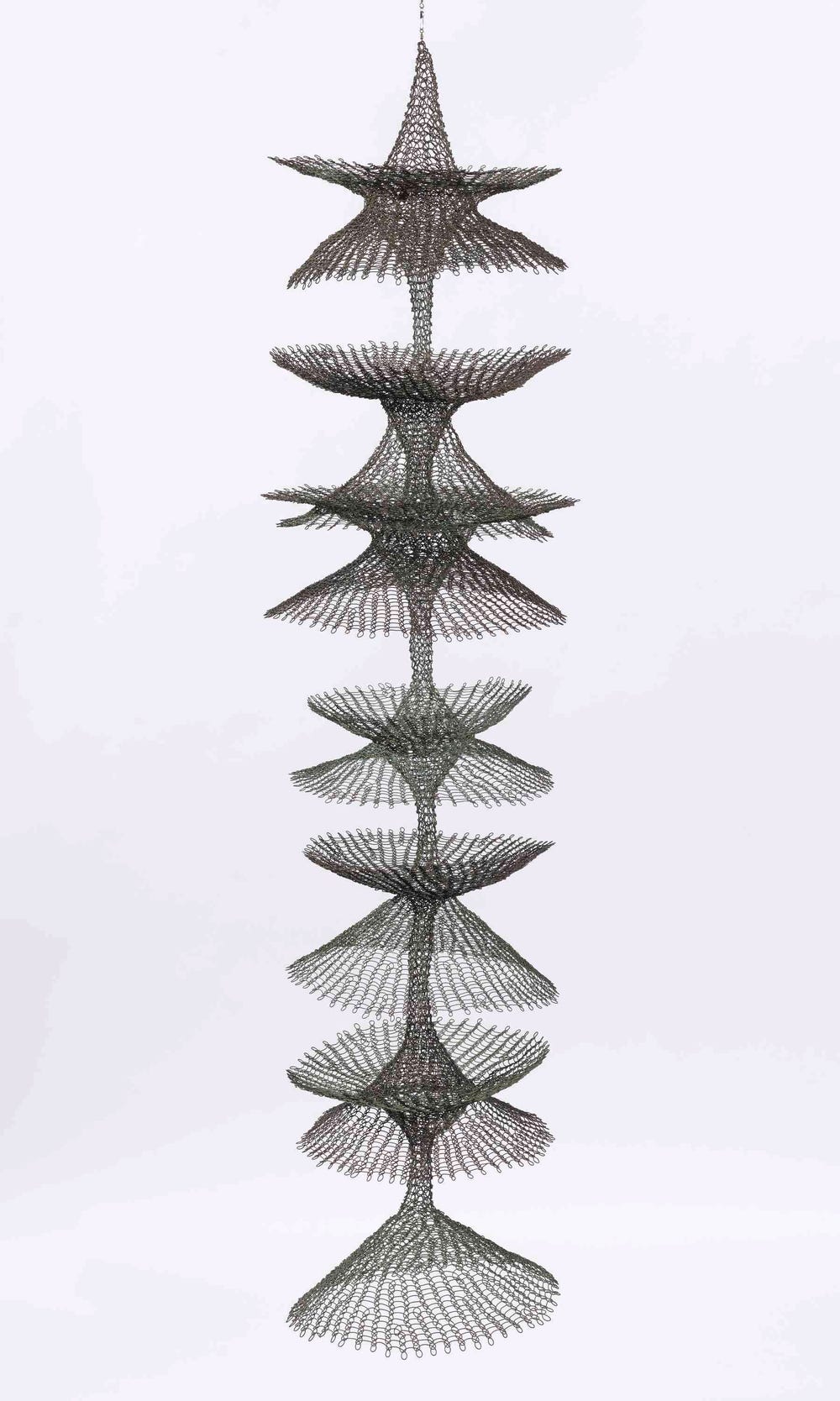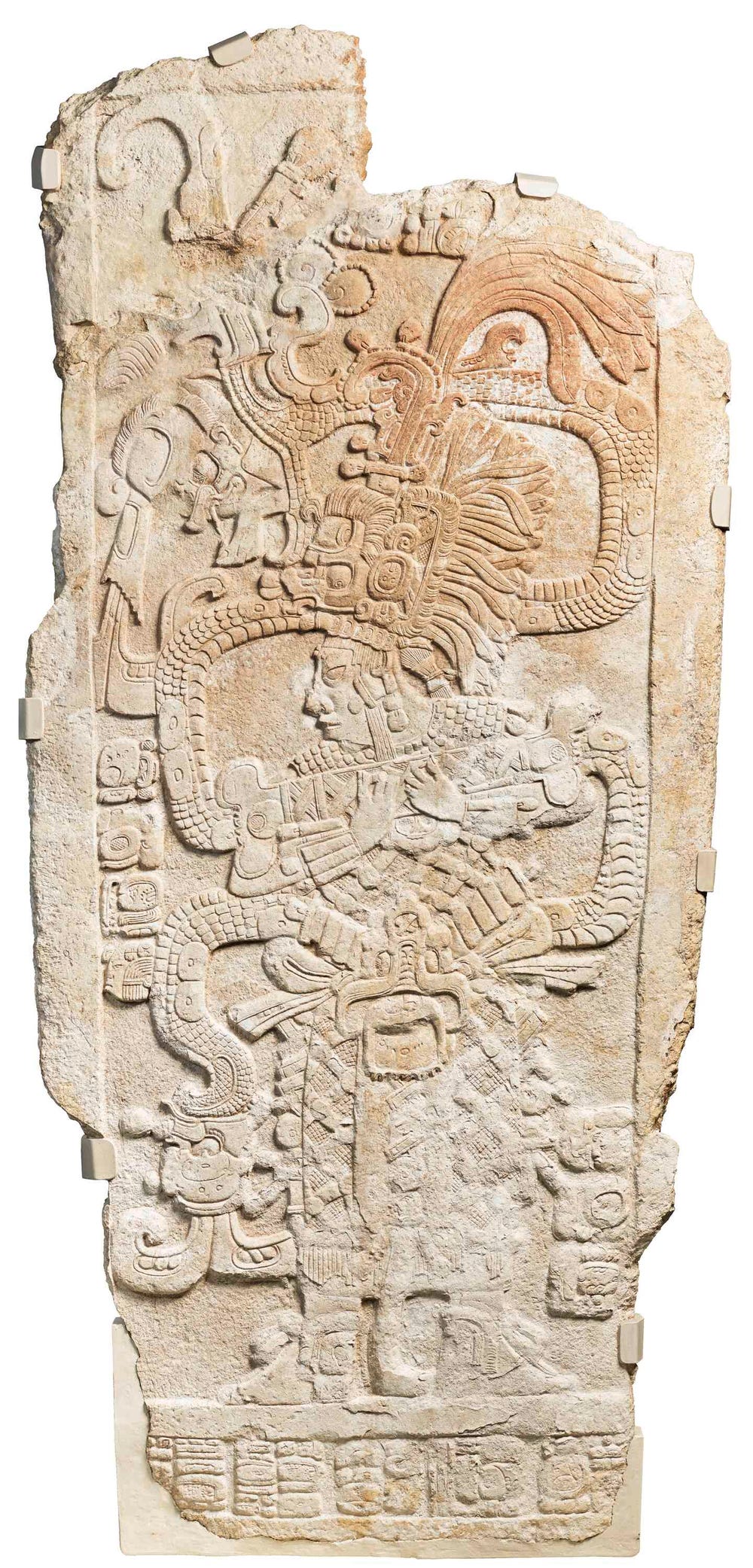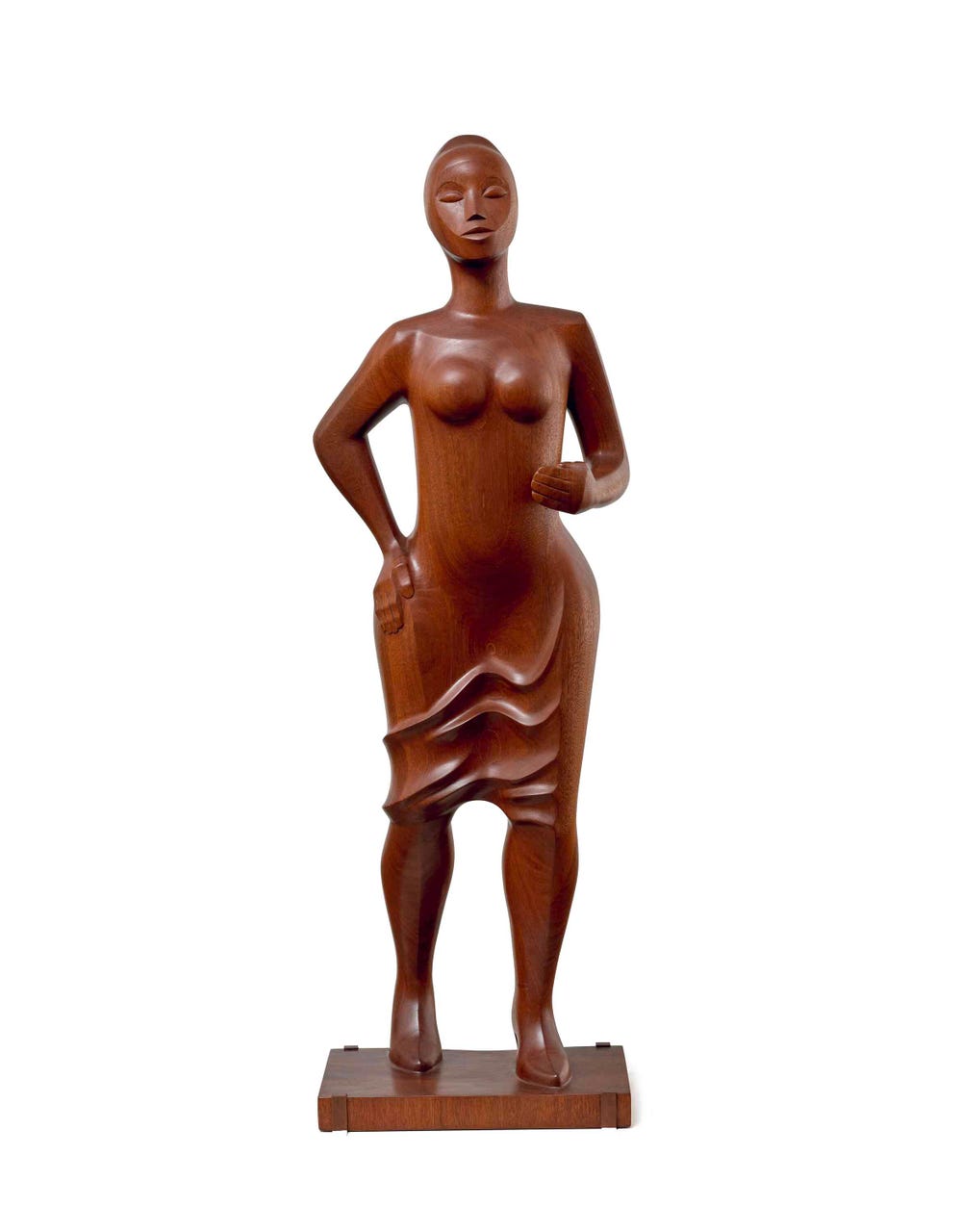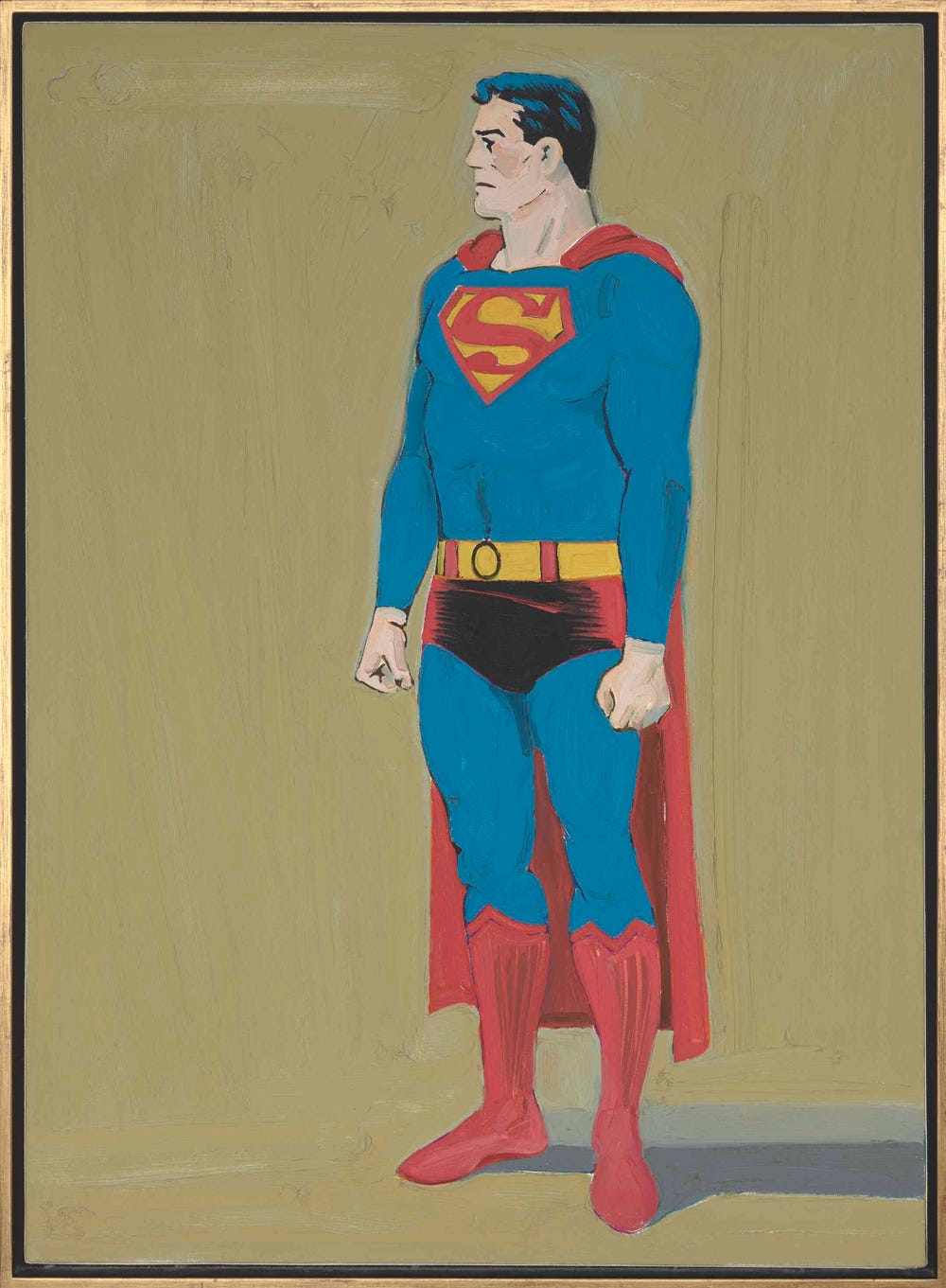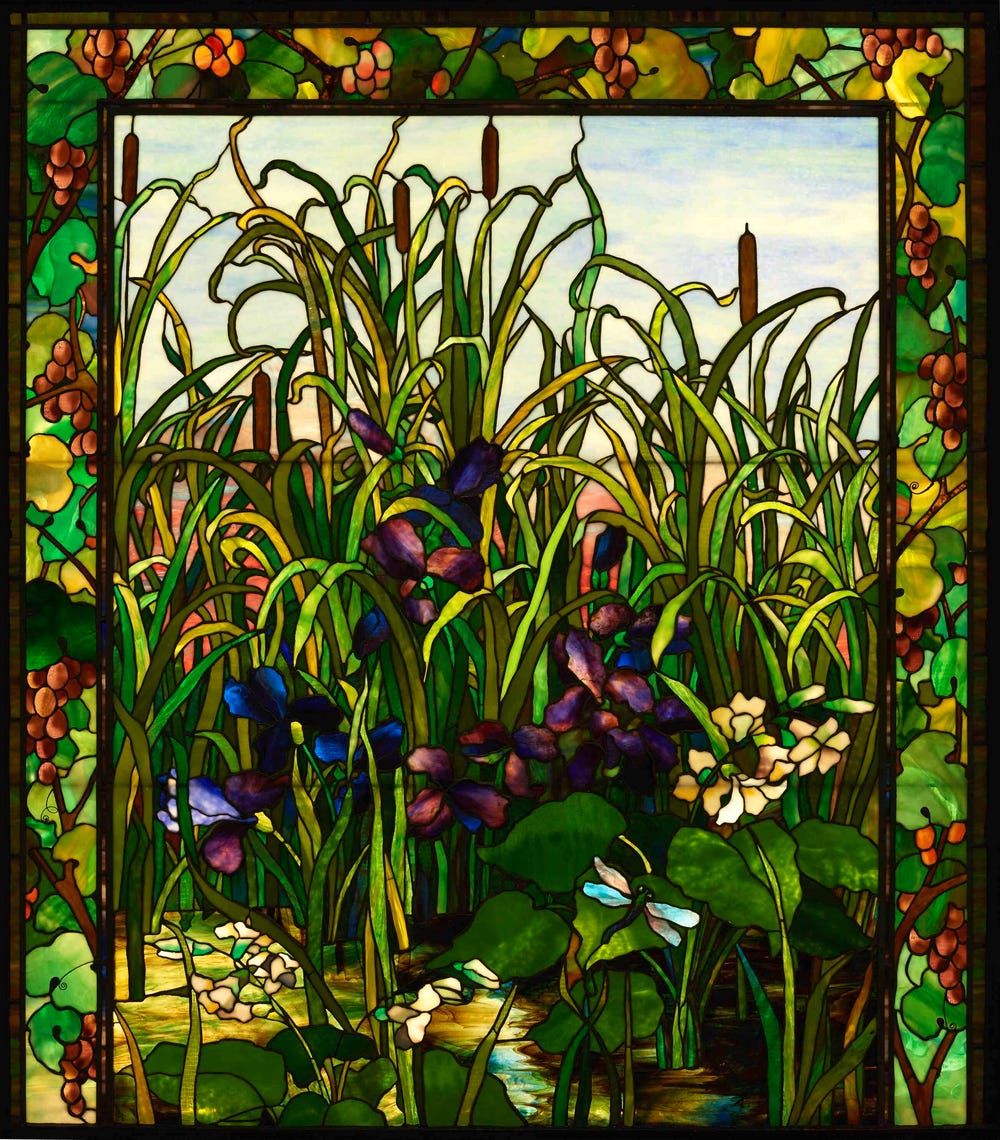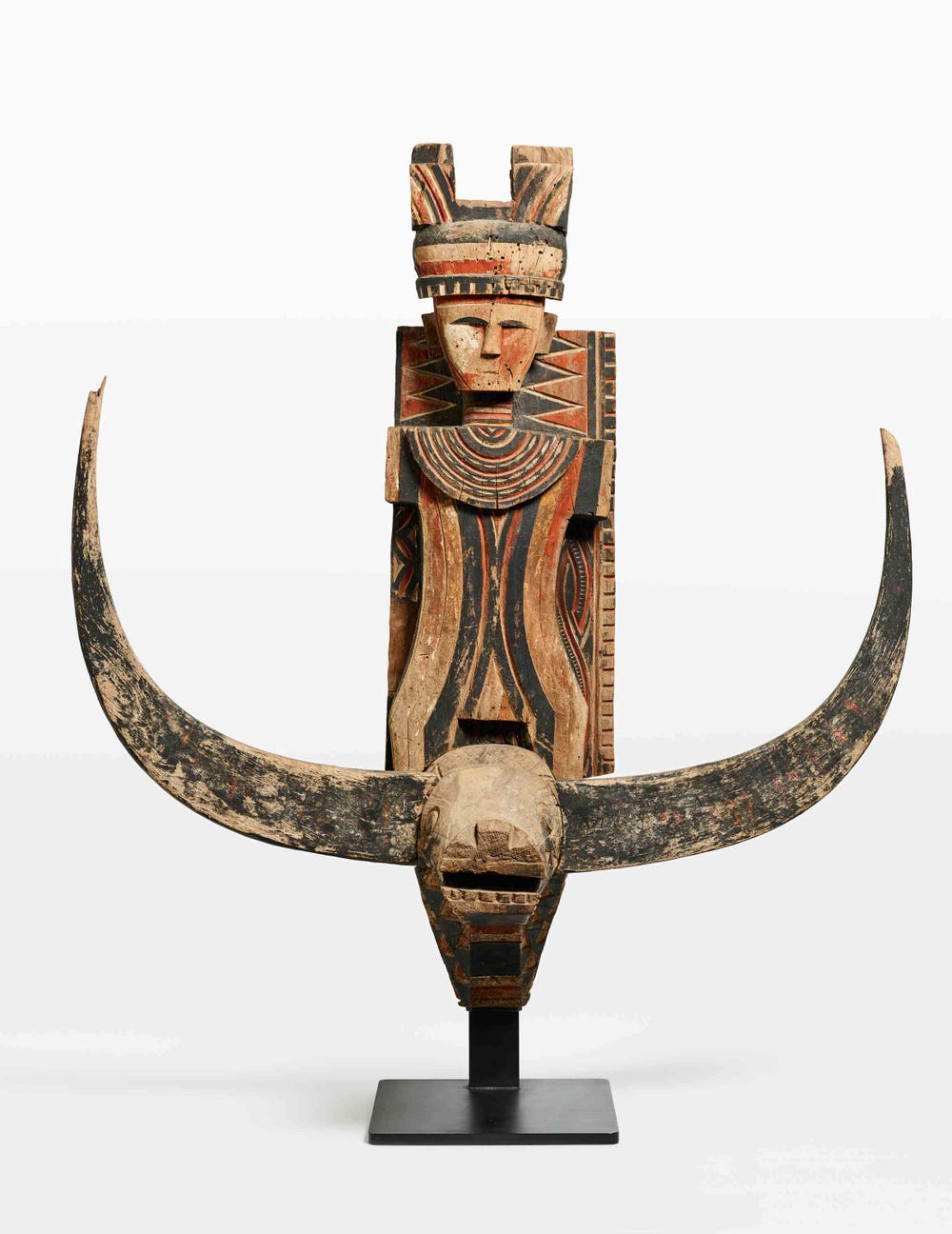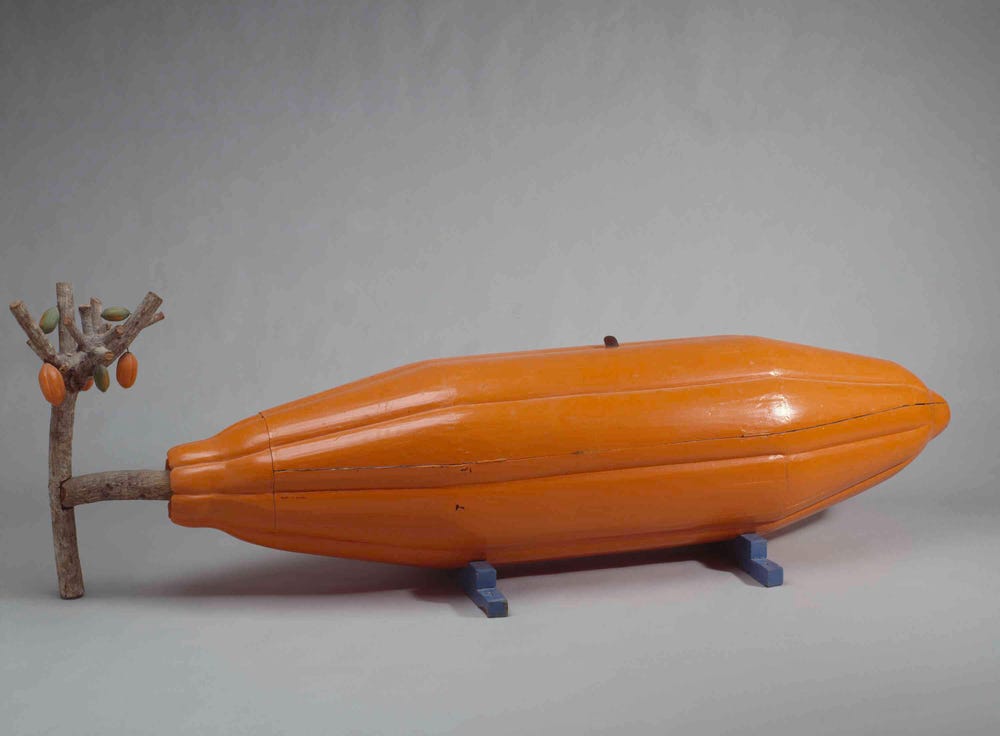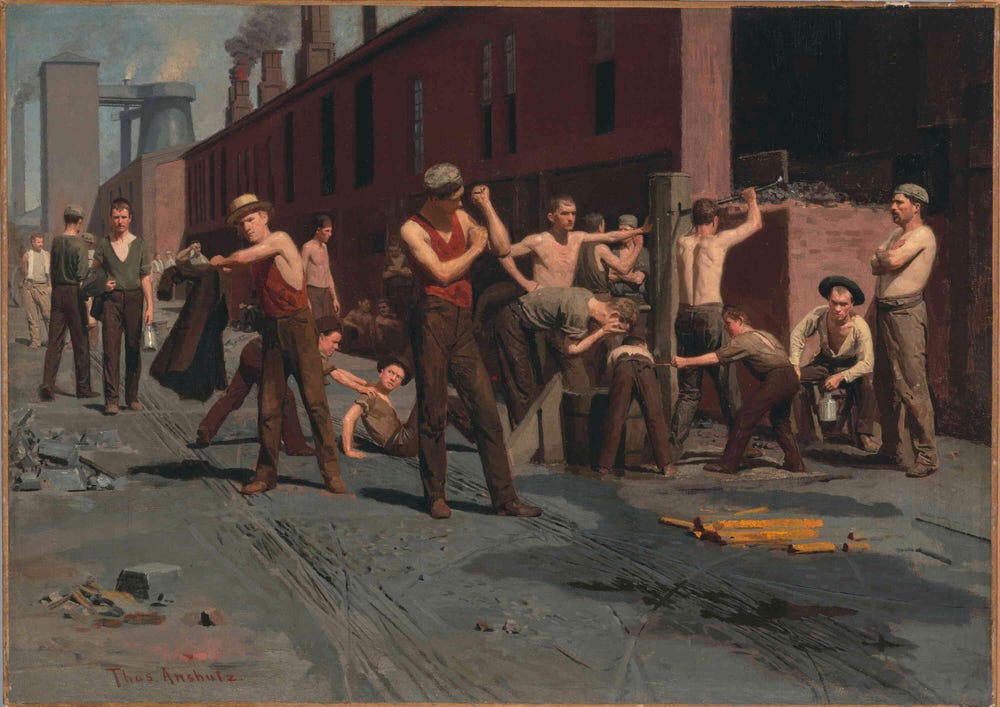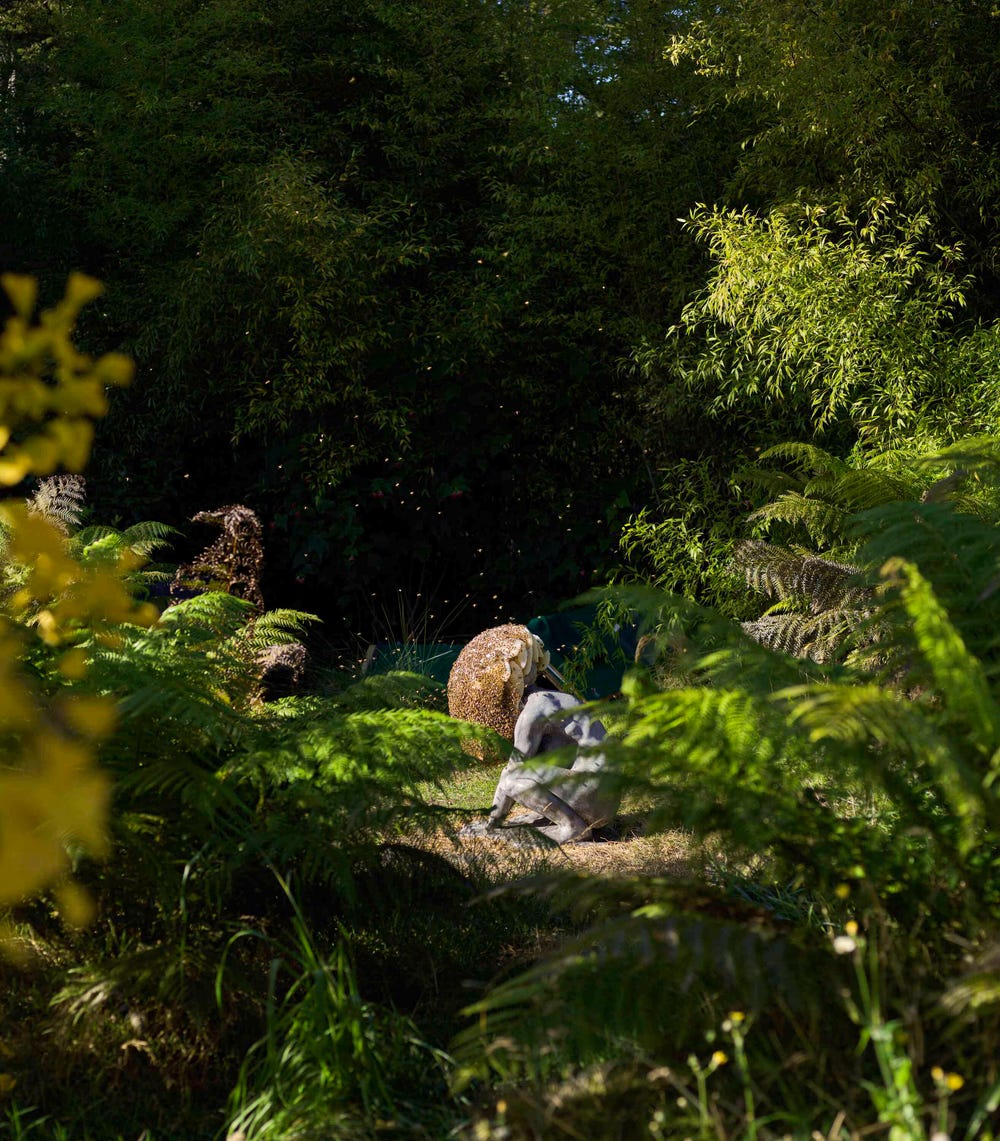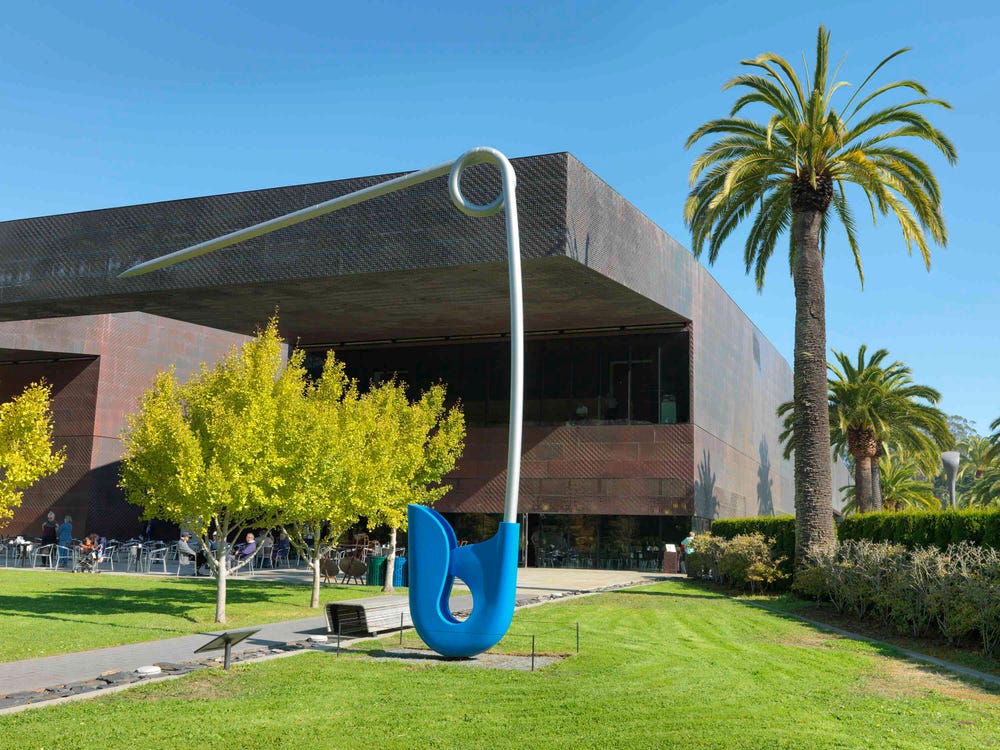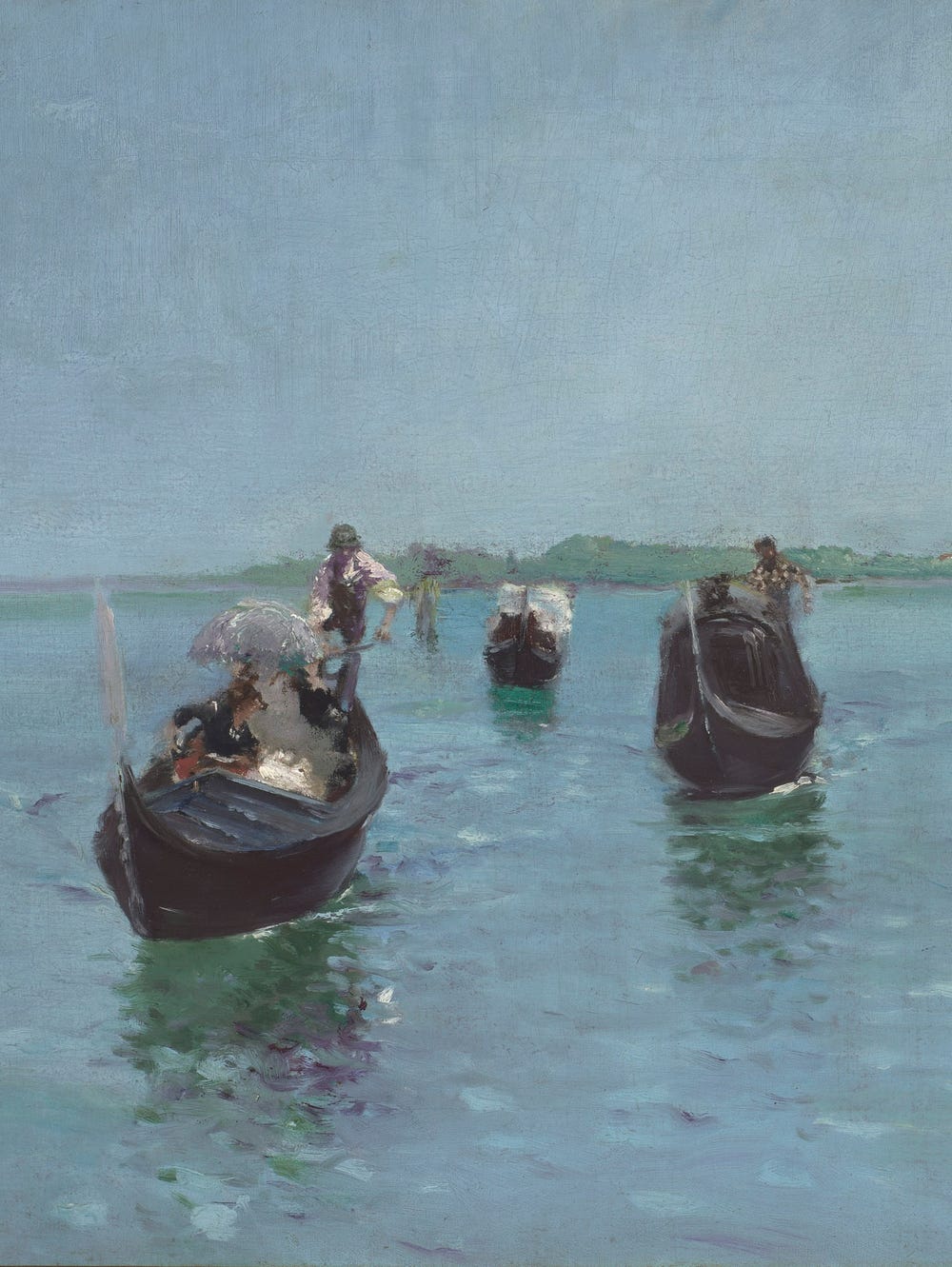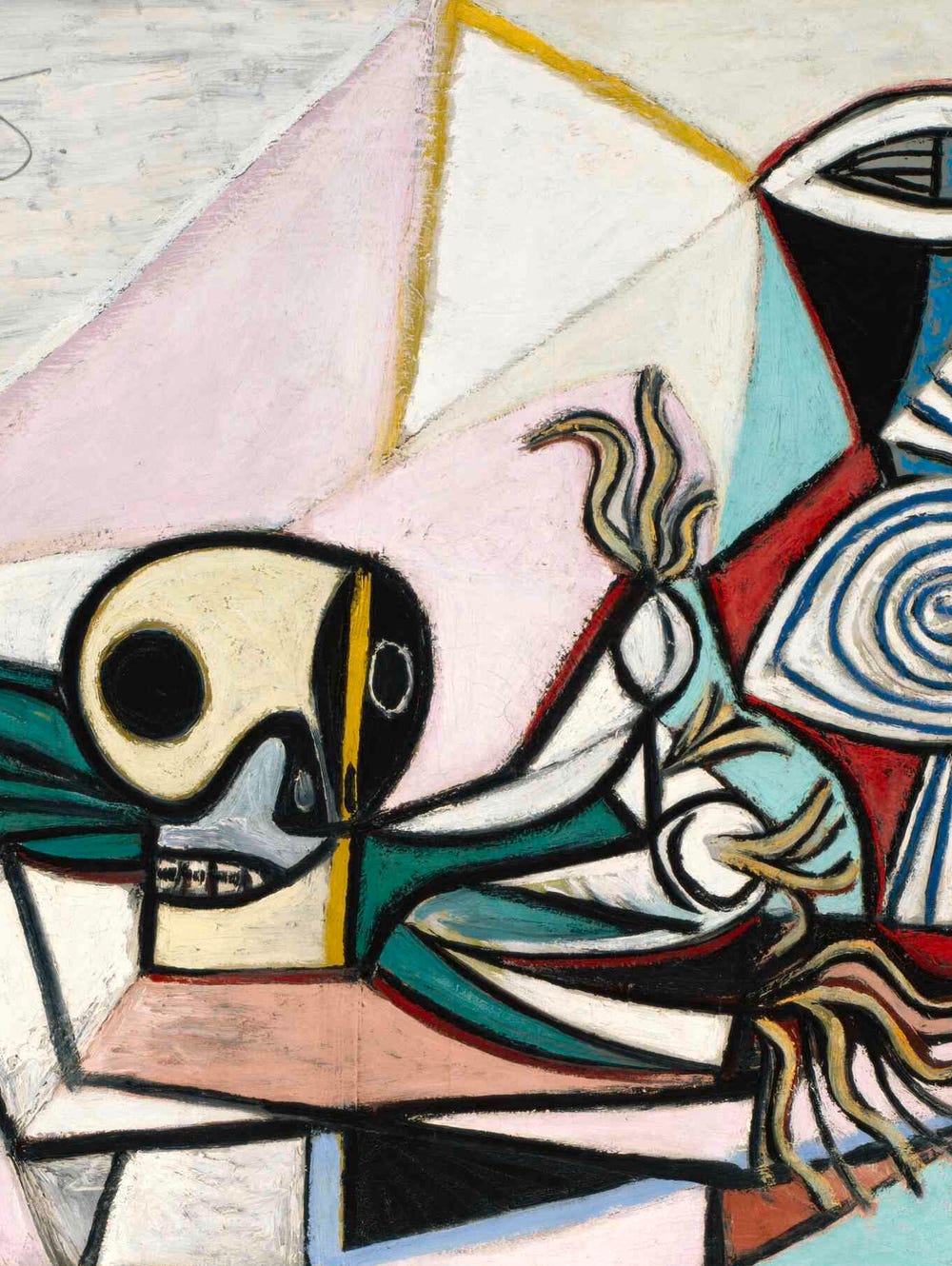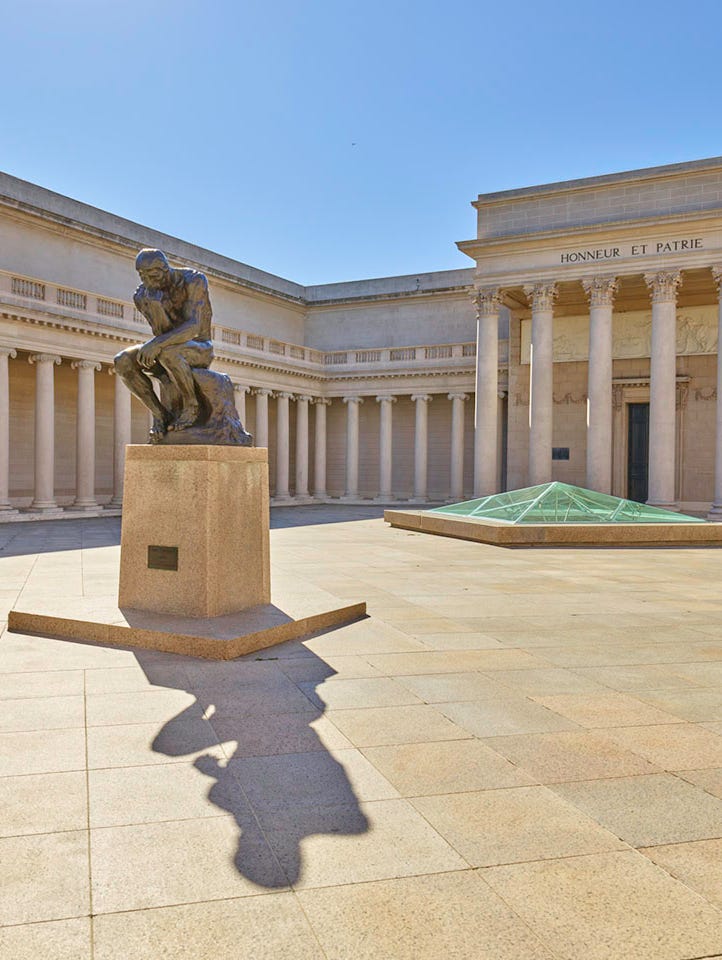Beginner’s Guide to the de Young: 10 Artworks to Get You Started
By Stefanie Lee, digital project coordinator
June 22, 2023
Mel Ramos (1935–2018), Superman (detail), 1962. Oil on canvas, 45 1/2 x 32 5/8 in. Fine Arts Museums of San Francisco, Museum purchase, Dr. Leland A. and Gladys K. Barber Fund and American Art Trust Fund, 2004.2. © Mel Ramos / Licensed by VAGA at Artists Rights Society (ARS), New York
Have you ever been to a museum and felt intimidated? Out of your element? Are you art-curious but art-shy, too?
You’re not alone. Museums can be challenging to navigate, especially for those who are new to art. It’s hard to know where to start, what to look for, and how to engage.
Here’s a quick guide to help you get situated, so you can get swept away by the art! Highlighting works from each of our collections, from American art to Oceanic art, it’s designed to help you navigate the museum without getting overwhelmed. Be sure to snag a map at the ticketing desk and check out our special exhibitions too. Explore with an open mind, take note of what draws you in, and veer off course when the moment strikes you. And, of course, don’t miss the 360° view of San Francisco from the Hamon Observation Tower.
1. Untitled, ca. 1955–1959, Tower
Ruth Asawa (1926–2013), Untitled, ca. 1955–1959. Galvanized steel and copper wire, 74 3/4 x 17 1/2 x 17 1/2 in. (189.9 x 44.5 x 44.5 cm). Fine Arts Museums of San Francisco, Gift of the artist, 2005.90.3. © Ruth Asawa Lanier, Inc. / Courtesy David Zwirner / Artists Rights Society (ARS), New York
This alcove near the elevator to the Hamon Observation Tower contains a variety of Ruth Asawa’s wire sculptures, created in the 1950s and 1960s. She developed and refined her techniques during her more than five-decade career in San Francisco. Asawa was dedicated to education, and helped establish the city’s first public arts high school, now named in her honor.
2. Stela with Ix Mutal Ahaw, 761, Gallery 2
Maya culture (Mesoamerica), Stela with Ix Mutal Ahaw, 761. Limestone, 233.7 x 114.3 x 7.6 cm (92 x 45 x 3 in.). Fine Arts Museums of San Francisco, Museum purchase, Gift of Mrs. Paul L. Wattis, 1999.42
This limestone stela (monument) depicts the Maya ahaw (ruler) Ix Mutal evoking the Maize God. Can you spot the serpent winding around her? It is thought to link the human and divine realms.
3. Stepping Out, 2000, Gallery 12
Elizabeth Catlett (1915–2012), Stepping Out, 2000. Laminated mahogany, 64 1/2 x 21 x 17 1/2 in. Fine Arts Museums of San Francisco, Museum purchase, The Johnnie L. Cochran, Jr. Art Fund, Inc., Beta Upsilon Boulé - Sigma Pi Phi Fraternity, The Links, Incorporated - San Francisco Chapter, Fine Arts Museums Tribute Funds, Ms. Del M. Anderson and Mr. John Handy, Mrs. Marguerite Archer, Rena Merritt Bancroft, PhD; Ms. Jo-Ann Beverly, Rev. “J” Edgar Boyd, Mrs. Mary Pat Cress, Mr. and Mrs. Richard Geist, Maxwell C. and Frankie Jacobs Gillette, Mr. and Mrs. Daniel Johnson, Jr.; Mr. and Mrs. Arthur Lathan, Mr. and Mrs. Terry E. Perucca and Dr. Alma Ribbs, 1999.199. © Catlett Mora Family Trust / Licensed by VAGA at Artists Rights Society (ARS), New York
Elizabeth Catlett used her art to advocate for the liberation of African Americans, women, and workers. In her mahogany sculpture Stepping Out, she depicts a strong, modern woman, standing in a confident pose — one hand on her hip.
4. Superman, 1962, Gallery 14
Mel Ramos (1935–2018), Superman, 1962. Oil on canvas, 45 1/2 x 32 5/8 in. Fine Arts Museums of San Francisco, Museum purchase, Dr. Leland A. and Gladys K. Barber Fund and American Art Trust Fund, 2004.2. © Mel Ramos / Licensed by VAGA at Artists Rights Society (ARS), New York
Mel Ramos ventured into Pop art with this painting, which captures a beloved comic book character. As kids, Ramos’s generation idolized Clark Kent as the ultimate everyman-turned-superhero. Superman was also a symbol of the triumph of good over evil. However, in the wake of worldwide conflicts, including the dropping of the atomic bomb and the Cold War, the symbol of Superman became more complicated.
5. Iris, Lily and Cattail Window, ca. 1904, Gallery 29
Lederle and Geissler (United States), Iris, Lily and Cattail Window, ca. 1904. Stained, leaded, and plated glass with wood frame, Object: 57 15/16 x 51 3/8 x 2 in. (147.2 x 130.5 x 5.1 cm). Fine Arts Museums of San Francisco, Museum Purchase, Calvin L. Malone American Arts and Crafts Fund, 2017.18
This vibrant stained glass window was created by former Tiffany artist Louis Lederle and Rudolph Geissler. It was originally installed in the Ansonia, an Upper West Side apartment in New York City. What plants and animals do you see beyond those listed in the title?
6. House facade figure, early 20th century, Gallery 31
House façade figure, early 20th century. Wood, pigments, 127 x 127 cm (50 x 50 in.). Fine Arts Museums of San Francisco, Gift of George and Marie Hecksher, 2004.10.2a–c
Striking carvings, like this figure, decorated the houses of high-ranking Toraja on the island of Sulawesi in Indonesia. Here, an important ancestor dressed for battle rides a water buffalo. These animals signify rank, wealth, and ritual duties, and are a recurring theme in the art of the Toraja.
7. Coffin in the shape of a cocoa pod, ca. 1970, Gallery 40
Seth Kane Kwei (before 1922–1992), Coffin in the shape of a cocoa pod, ca. 1970. Wood, paint, and cloth, 34 x 102 x 29 in., (86.4 x 259.1 x 73.7 cm.). Fine Arts Museums of San Francisco, Gift of Vivian Burns, Inc., 74.8
Created by Seth Kane Kwei, this piece stands out due to its unusual shape and bright color. The late artist was known for making fantasy coffins that symbolized his client’s aspirations or career. His workshop in Ghana still makes these coffins, but is now owned and managed by his descendants.
8. The Ironworkers’ Noontime, 1880, Gallery 24
Thomas Pollock Anshutz (1851–1912), The Ironworkers’ Noontime, 1880. Oil on canvas, 17 x 23 7/8 in. (43.2 x 60.6 cm). Fine Arts Museums of San Francisco, Gift of Mr. and Mrs. John D. Rockefeller 3rd, 1979.7.4
This painting is by Thomas Pollock Anshutz, who taught for nearly 30 years at the Pennsylvania Academy of Fine Arts. He grew up in West Virginia, where urban factories dominated the landscape and he saw firsthand how skilled workers grappled with the effects of automation.
9. Exomind (Deep Water), 2017–ongoing, Osher Sculpture Garden
Pierre Huyghe (b. 1968), Exomind (Deep Water), 2017–ongoing. Cast concrete with wax hive and bee colony, 72.1 x 60 x 79.1 cm (28 3/8 x 23 5/8 x 31 1/8 in.) Beehive dimensions variable. Fine Arts Museums of San Francisco, Museum purchase, Phyillis C. Wattis Fund for Major Accessions (American and European Art), 2021.4. © Pierre Huyghe / Artists Rights Society (ARS), New York
This piece by Pierre Huyghe was built out of cast concrete and contains a real wax hive and bee colony. In the warmer months, you can view it Thursday through Sunday and the first Tuesday of each month, depending on the weather.
10. Corridor Pin, Blue, 1999, Osher Sculpture Garden
Claes Oldenburg (American, 1929–2022), Coosje van Bruggen (1942–2009), Corridor Pin, Blue, 1999. Stainless steel, aluminum, and polyurethane enamel, 255 x 254 x 16 in. (647.7 x 645.2 x 40.6 cm). Fine Arts Museums of San Francisco, Foundation purchase, gift of the Barbro Osher Pro Suecia Foundation, 2003.66a–b. Copyright 1999 Claes Oldenburg and Coosje van Bruggen
Husband and wife Claes Oldenburg and Coosje van Bruggen were known for their large-scale sculptures, which are often found in cities and other public locations. You can spot this pin as you walk up to the de Young. Its “arm” hangs playfully over the sculpture garden. For another Oldenburg / van Bruggen sighting, stroll along the Embarcadero.
Note: Artworks are often rotated due to their sensitivity to light or loaned out for exhibitions at other museums. If not all of these works are on view when you visit, don’t worry. There is plenty more to see!
